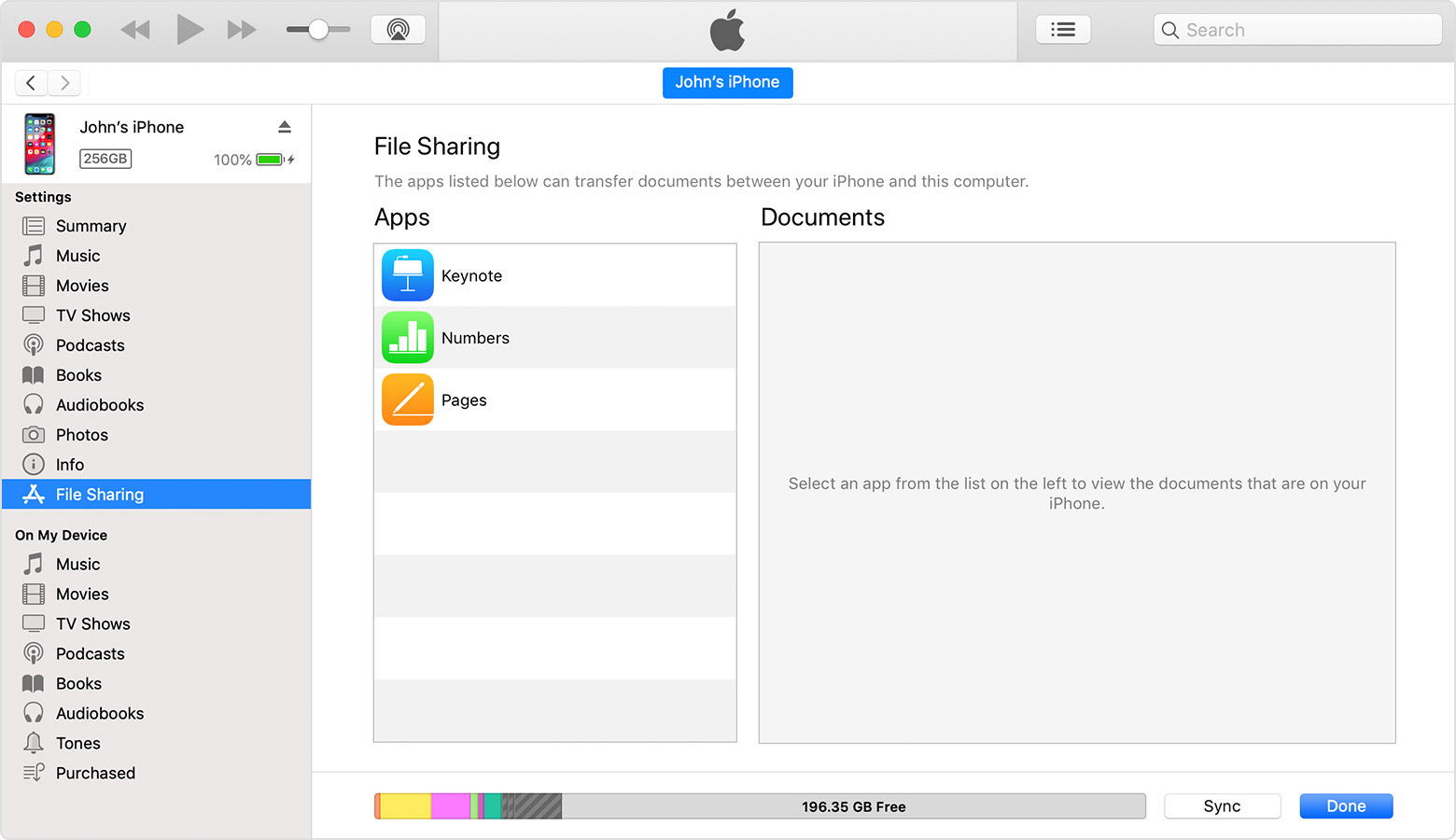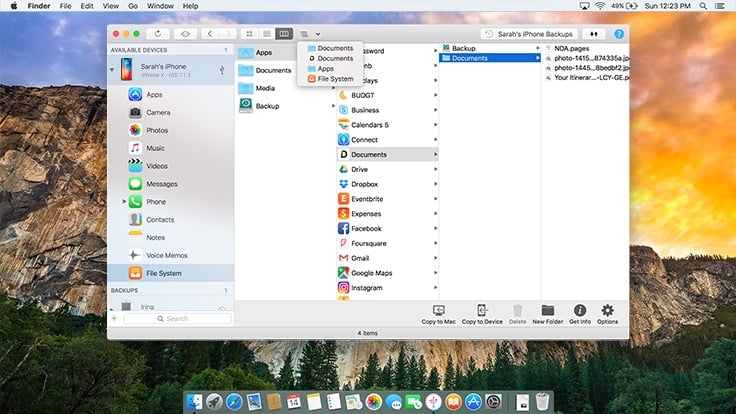Doc File Transfer To Mac

Nov 1, 2018 - You can copy files between your computer and apps on your iOS. All of your documents from your iPhone, iPad, iPod touch, Mac, or PC.
If you’re switching from a PC to a Mac, one of the first things you’ll want to do is to move all your data to your new computer. The process is fairly simple, but you can go down any of several paths depending on your setup and your needs. Consider what’s in the cloud Before deciding on a data-transfer strategy, consider the extent to which the data on your PC is already mirrored in the cloud.
For example, if you already store most of your personal files in a folder that syncs to the cloud via a service such as, you can install the corresponding Mac app, log in with your existing account, and sit back while your files sync automatically. Likewise, if you store all your email on an, you need only enter your credentials for that server in a Mac email client such as the built-in Apple Mail, and all your messages will download to your Mac. And if you rely on for word processing and spreadsheets, your documents will be right there in whichever Mac browser you choose. Take a quick mental inventory of your data. Be sure to consider personal data such as email, contacts, calendars, and bookmarks; media such as music, photos, movies, and TV shows; and documents you’ve created or downloaded.
If most of that is already somewhere in the cloud, the path of least resistance may be to connect to the same cloud services on your Mac, and then manually transfer any remaining items that live on your PC’s hard disk and nowhere else. If your PC stores most of your data locally, you can choose among three main approaches to get it onto your Mac: Take the easy way out When you buy a new Mac directly from Apple (either at an Apple retail store or online), you can optionally pay an extra $99 for Apple’s service. In addition to a full year of training on Apple products, this program includes a one-time data-transfer service. Take your old PC to your nearest Apple Store, and someone will transfer your data, install any Apple software you’ve purchased, and help you with any initial setup or usage questions. When you enroll for Apple's One to One service, you can keep track of your training sessions and topics you want to learn about on a custom Web page. The nice thing about One to One is that you not only get your files and data on a Mac, you have the benefit of immediate, on-the-spot professional help.
HangARoo is a word game for Windows XP and older. Similar to games like Hangman or Wheel of Fortune’s phrase-guessing style, HangARoo provides users with endless fun and entertainment. When you play Hangman, you usually given a clue as to what the word(s) are all about; for example, “Movie” or “Catchphrase.” However, the Hangaroo game is more like a TV show in that it gives you a sentence as a clue. The sentences you are given will depend on the difficulty you choose for the game. Hangaroo word game free download game. A free word game that places a unique twist on the classic word game Hangman. A person who downloads HangARoo needs to bear in mind that these icons do not vanish.
You can also make appointments for ongoing classes and training, all of which can ease the transition to a new platform. Use a virtual assistant When you turn on a new Mac for the first time, a setup assistant runs to help you connect to the Internet, create a user account, and configure a number of important settings. As part of this process, this app asks if you want to transfer data from another Mac or PC. If you decide to skip the data-transfer step, you can accomplish the same thing later by opening Migration Assistant, a utility found in your Mac’s /Applications/Utilities folder. Other than letting someone else do the work, Migration Assistant (in either form) is the easiest way to move data from a PC to a Mac.
Migration Assistant doesn’t move files blindly from one computer to another. Instead, it intelligently sets up your Mac to resemble, as nearly as possible, the way your PC was configured.
For example, email, contacts, and calendars (and their associated accounts) might be migrated from Outlook on a PC to Mail, Contacts, and Calendar, respectively on a Mac; bookmarks in Internet Explorer are recreated in Safari; documents are moved to analogous locations on your Mac; and even your desktop background picture is usually transferred. To use Migration Assistant, make sure your PC and Mac are on the same Wi-Fi network or, for faster transfers, connect them with an Ethernet cable. Then, on the PC, download and install the. Run that app on your PC and Migration Assistant on your Mac. Follow the prompts on both computers to transfer your data; for complete details and step-by-step instructions, see on Apple’s website. When you turn on a new Mac for the first time, the setup assistant offers to transfer data from another computer, which may be a Windows PC. Move data manually If you have only a small amount of data to transfer, or if you want complete, manual control over the process, you can connect your PC and Mac over a wireless or wired network and use file sharing to make the PC’s files available to the Mac.
On the PC, make sure you’ve enabled file sharing and have shared the folder (such as your home folder) you want to access on your Mac. (For complete instructions, visit.) Then, on your Mac, open a new window in the Finder. In the sidebar under “Shared,” click All.

Then select your PC, click Connect As, enter the username and password you set up on your PC, and click Connect. The folder you shared on your PC should appear in the Finder on your Mac; you can then look through it for the items you want to copy and drag them to the location of your choice on your Mac.
Acronis true image bootable disk file. How to create an Acronis true image Wd Ed. Recovery Media Important: • The USB Flash Drive must have FAT16 or FAT32 file system • Ensure that the USB Flash drive is detected as a Removable Drive in Windows • When booting from the rescue media and using a standalone version of Acronis True Image you cannot recover files and folders encrypted with use of the encryption available in Windows XP and later operating systems • Open Acronis True Image WD edition • Click Rescue Media Builder • Click Acronis bootable rescue media • Choose ISO file, DVD / CD Drive, or USB Flash Drive.